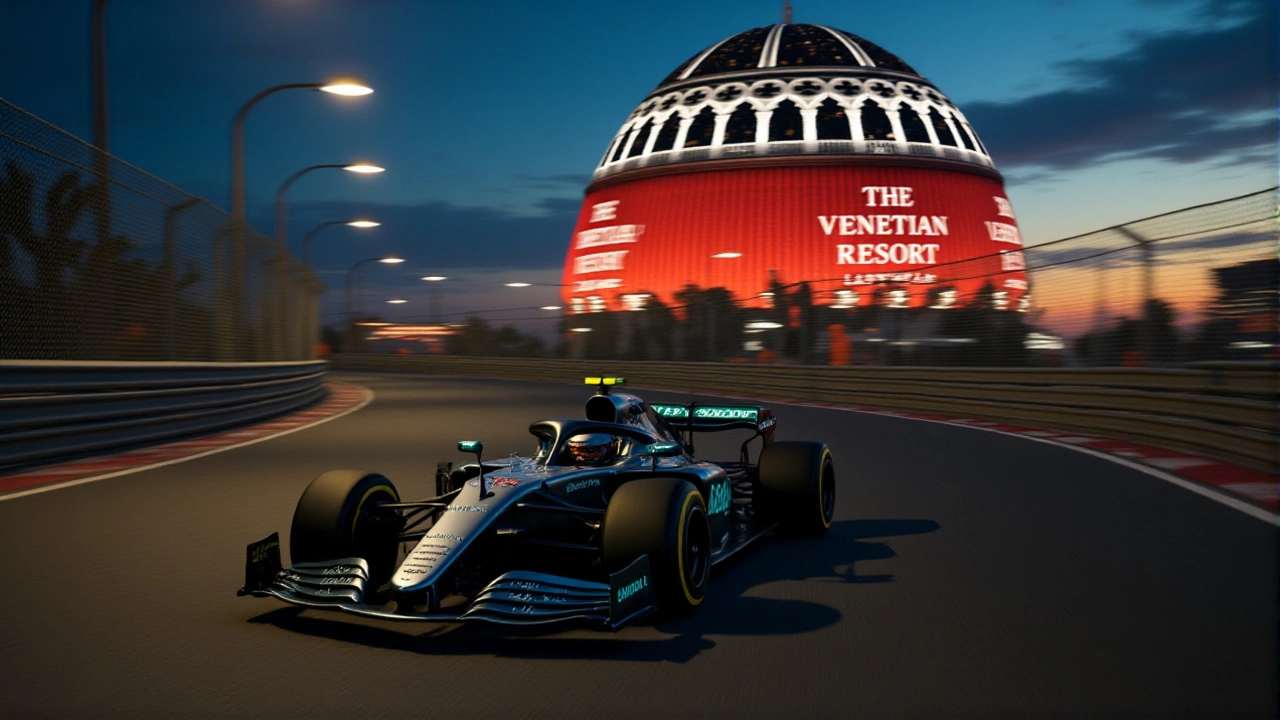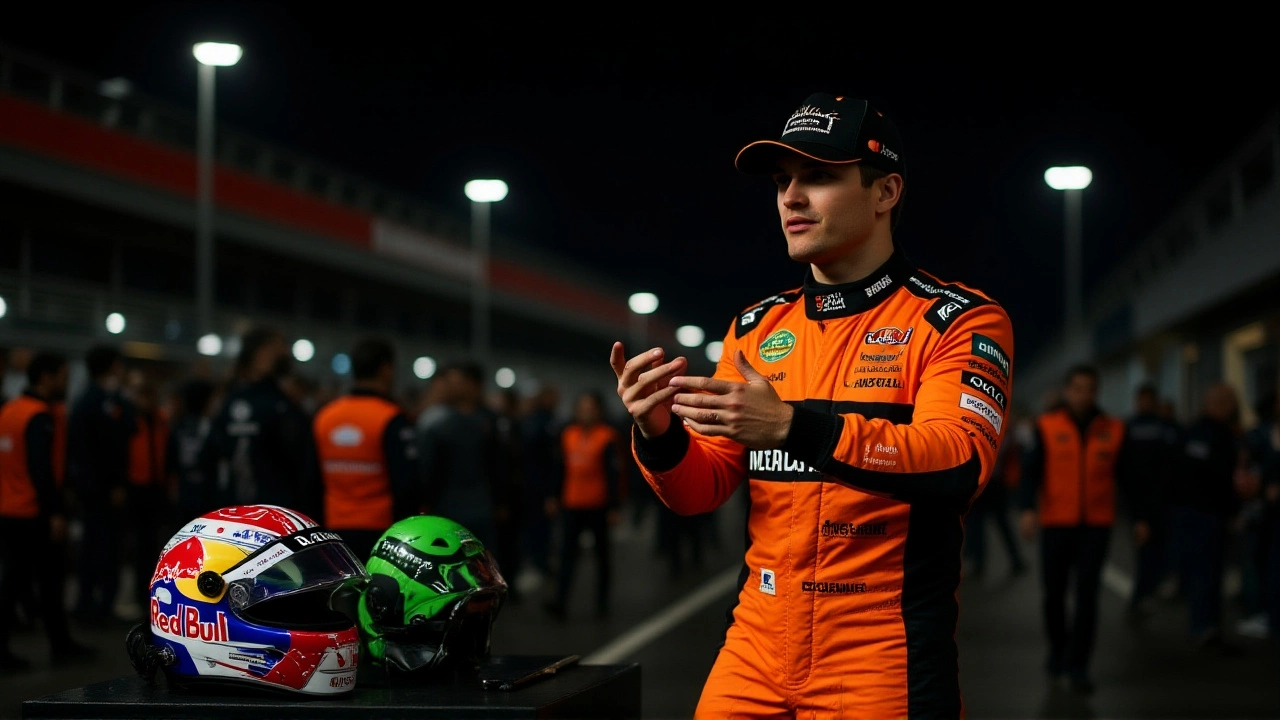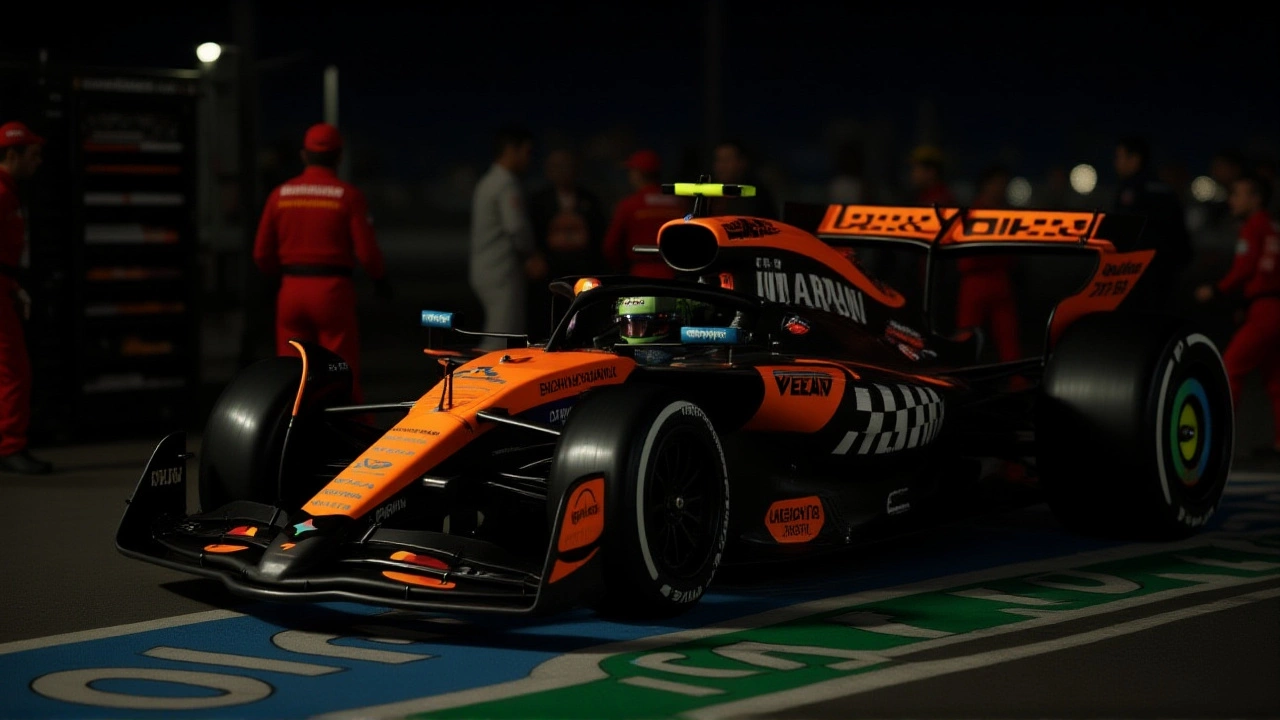It was supposed to be a coronation. Lando Norris had dominated qualifying in the wet, claimed pole, and finished second behind Max Verstappen at the Las Vegas Grand PrixLas Vegas Strip Circuit—a race that looked like it would lock up his first Formula 1 world title. Two hours later, the celebration turned to stunned silence. Both McLaren Racing Limited cars, the MCL39s of Norris and teammate Oscar Piastri, were disqualified after post-race inspections revealed their skid planks had worn below the 9mm minimum. The FIA didn’t just find a technical breach—it found a championship-altering one.
How a Tiny Piece of Carbon Fiber Changed Everything
The skid plank, a 10mm-thick wooden block beneath the car’s floor, is designed to prevent teams from running too low to the track for aerodynamic advantage. By Article 3.5.9 of the FIA technical regulations, it must not wear below 9mm after a race. Both McLaren cars, despite appearing clean on track, showed readings of 8.6mm and 8.7mm on their rearmost planks. The FIA technical delegates, led by Jo Bauer and Tim Goss, conducted two rounds of measurements—with McLaren’s own team present. The result: undeniable. No cheating. No sabotage. Just a car that, over 57 grueling laps on the bumpy Las Vegas Strip, wore down just enough to cross the line."It’s not about intent," said one senior FIA official, speaking off-record. "It’s about consistency. If we let this slide, every team will test the limits. We don’t have a choice."
The Championship Domino Effect
Before the disqualification, Norris led with 380 points. Piastri sat fourth with 342. Verstappen, who’d won the race, had 338. Now? Norris is down to 390. Verstappen and Piastri both sit at 366. That’s a 24-point gap—with 58 still on the table. The title race isn’t just alive—it’s on fire.McLaren had been on a roll. Norris had won three of the last five races. Piastri had finally started scoring consistently after a mid-season slump. The team led the constructors’ championship by 37 points over Red Bull. Now? The gap is down to 11. And with two races left—Qatar Grand PrixLusail International Circuit and Abu Dhabi Grand PrixYas Marina Circuit—the pressure is unbearable.

McLaren’s Shock and the FIA’s Cold Logic
Team principal Andrea Stella called the decision "devastating but correct." Sam Michael, the sporting director, admitted the team had underestimated the track’s abrasiveness. "We knew Las Vegas was tough," he said. "But we didn’t think we’d lose 20 points just because the car ran a little longer than expected."There’s history here. In 2021, Max Verstappen’s title win was overturned by controversy over a late safety car. This? It’s the opposite. No drama. No last-lap chaos. Just a technicality that, by the book, must be punished. The FIA has ruled similarly in the past: in 2019, Ferrari’s Charles Leclerc lost pole at Monza for a similar plank violation. In 2023, Alpine’s Esteban Ocon was disqualified from Silverstone for the same reason. No exceptions. No mercy.
But this is different. This isn’t a rookie error. This is McLaren—veterans of 183 race wins—getting caught on the edge of a rule that’s been unchanged since 2010. The car was fast. The setup was aggressive. And in the end, the track won.
What This Means for the Final Two Races
The Qatar Grand Prix is a sprint weekend—qualifying on Friday, race on Saturday. That means less time to fix issues. Abu Dhabi is a traditional race, but the Yas Marina Circuit is smoother, less abrasive. McLaren will likely run a thicker plank in Qatar, sacrificing some downforce. Verstappen, meanwhile, will push harder, knowing Norris can’t afford another DQ. Piastri? He’s now the wildcard. With nothing to lose, he might go all-in.And here’s the twist: Norris, who looked like the heir apparent, now has to race like a man under siege. He’s not just fighting Verstappen—he’s fighting his own team’s mistake. One slip, one misjudged corner, one worn plank, and it’s over.

Why This Isn’t Just About Points
This disqualification isn’t just about who wins the title. It’s about trust. F1 fans have spent years watching teams push boundaries—sometimes over the line. But the FIA’s zero-tolerance stance here sends a message: if you’re going to win, win clean. No loopholes. No "we didn’t realize" excuses.For McLaren, it’s a bitter pill. They’ve spent $2 billion over the last five years to rebuild. They’ve hired the best engineers. They’ve signed the brightest young drivers. And now, a 0.3mm difference could cost them everything.
For Verstappen? It’s redemption. After years of being the favorite, he’s suddenly the underdog again. For Piastri? It’s his moment. The Australian, who hasn’t stood on a podium since Monza in September, now has a real shot at his first win—and maybe his first title.
And for the sport? It’s a reminder that F1 isn’t just about speed. It’s about precision. About millimeters. About rules. And sometimes, about how one tiny piece of carbon fiber can change everything.
Frequently Asked Questions
Why were both McLaren drivers disqualified if only one car might have had a problem?
Each car is inspected individually under FIA regulations. Even if only one car had violated the skid plank rule, both would still be disqualified if they were part of the same team entry. The FIA treats each car as a separate entity, and McLaren’s technical team is responsible for ensuring both vehicles comply. Both MCL39s were found below the 9mm threshold, so the disqualifications were mandatory.
Could McLaren appeal the decision?
Technically, yes—but it’s nearly impossible to overturn. The FIA’s technical delegates used calibrated laser scanners, and McLaren’s own representatives were present during both measurements. The stewards reviewed all data, including telemetry and photos. Past appeals on similar skid plank cases (like Alpine in 2023) have consistently failed. McLaren’s only realistic path is to accept the result and focus on the next two races.
How does this affect McLaren’s chances in the constructors’ championship?
Before the DQ, McLaren led Red Bull by 37 points. Now, the gap is just 11. With only 58 points available, Red Bull can overtake them with a strong finish in Qatar and Abu Dhabi. Even if McLaren scores 25 points across the two races, Red Bull needs just 36 to win the title. McLaren’s lead is now fragile—and their strategy must shift from dominance to survival.
Is this the biggest F1 championship upset in recent history?
It’s among the top three. The 2021 Abu Dhabi finale was more dramatic, but this is more consequential: a clear favorite stripped of points by a technicality, with the title now wide open. Compare it to 2007, when Fernando Alonso lost the title due to a spygate scandal—this is similar in impact, but without scandal. It’s pure regulation enforcement, making it one of the purest, most brutal championship shifts in modern F1.
What will McLaren do differently in Qatar and Abu Dhabi?
McLaren will likely increase the skid plank thickness to 10.5mm, even if it means losing 2-3 tenths of a second in downforce. They’ll also adjust suspension settings to reduce rear-end scrubbing on bumpy sections. In Abu Dhabi, where the track is smoother, they might revert to a more aggressive setup. But in Qatar’s sprint format, with only one qualifying session, they’ll prioritize reliability over outright speed—because another DQ would end their title hopes for good.
Can Oscar Piastri still win the drivers’ title?
Yes—unthinkable just 24 hours ago. With 366 points, he’s tied with Verstappen and just 24 behind Norris. If he wins both remaining races (25 points each), and Norris finishes outside the top three in both, Piastri wins the title. It’s a long shot, but not impossible. He’s now the most dangerous driver in the field—no pressure, no expectations, just pure opportunity.
